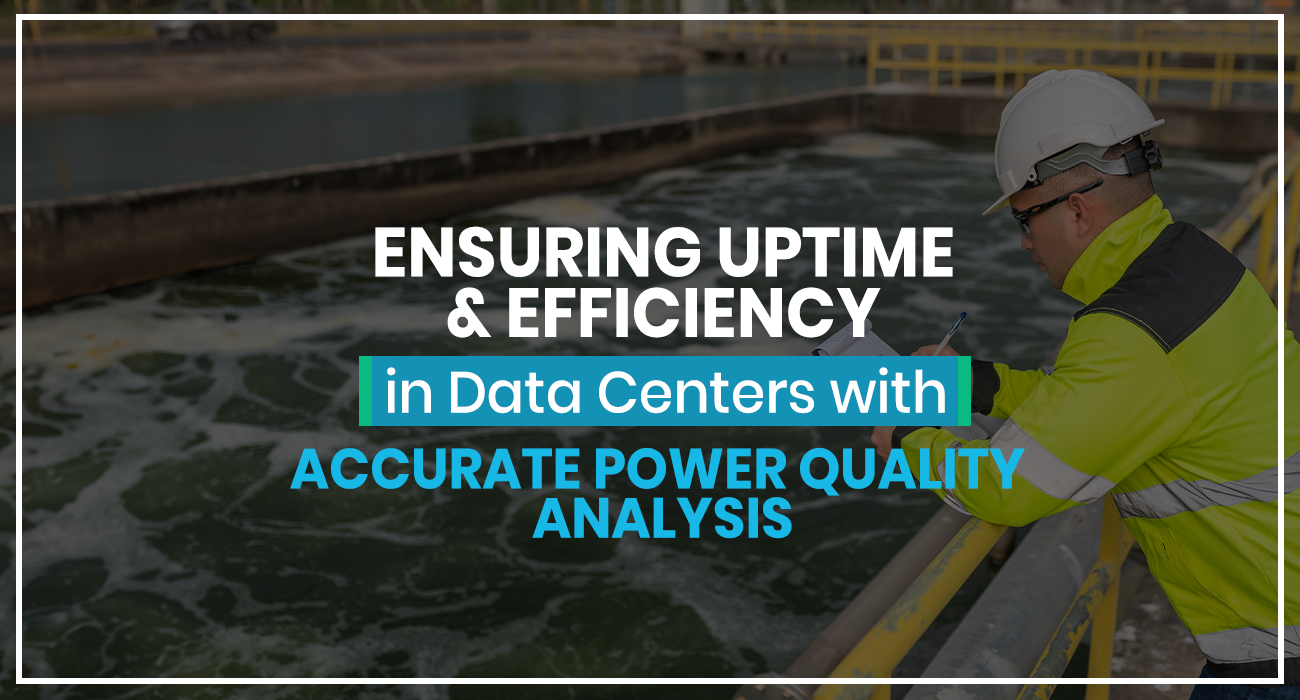
Ensuring Uptime and Efficiency in Data Centers with Accurate Power Quality Analysis
In today’s digital age, data centers are the heart of every enterprise’s operations. From managing cloud-based applications to storing massive volumes of business-critical data, data centers must operate 24/7 without interruption. However, behind their seamless functionality lies a critical dependency—reliable, clean, and stable electrical power. Even minor power issues can disrupt systems, cause data loss, or damage expensive equipment. That’s why power quality analysis is an essential component of data center infrastructure management.
For data centers in the Middle East and beyond, Cornerstone Middle East offers advanced testing and inspection services that help identify and resolve hidden electrical issues. This blog explains how power quality analysis protects uptime, enhances efficiency, and ensures compliance with international standards in the highly sensitive data center environment.
What is Power Quality Analysis in a Data Center?
In a data center, power quality analysis involves testing and measuring how effectively power is delivered and used by critical systems such as servers, cooling units, backup generators, and power distribution units (PDUs). The goal is to detect distortions, voltage irregularities, harmonic interference, or frequency deviations that can compromise operations.
Unlike standard commercial environments, data centers have a zero-tolerance policy for electrical faults. Any slight variation in voltage or frequency can lead to:
- Unscheduled server shutdowns
- Corrupted data or lost packets
- Increased cooling requirements due to overheating
- Failure of redundant power systems like UPS or generators
Power quality testing in data centers is highly specialized and requires sophisticated equipment and expert-level inspection, such as the services provided by Cornerstone Middle East.
Why is Power Quality Analysis Critical for Data Centers?
Downtime is expensive. According to the Uptime Institute, the average cost of a data center outage exceeds $250,000. Much of this can be traced back to poor electrical conditions that went unnoticed until a failure occurred.
Power quality analysis helps data centers:
- Prevent Downtime: By detecting and resolving power disturbances before they trigger shutdowns.
- Protect Equipment: Servers, switches, and HVAC systems are sensitive to fluctuations; analysis minimizes damage risks.
- Support Energy Efficiency: Identifying inefficiencies in power distribution can help reduce energy consumption.
- Improve Redundancy: Ensures that backup systems like UPS and gensets function under clean power conditions.
- Ensure Compliance: Meets ISO, IEC, and Uptime Institute guidelines for electrical testing and reporting.
Key Issues Detected in Data Center Power Quality Analysis
- Voltage Sags and Swells
Sudden drops or increases in voltage affect server performance and can cause data corruption or reboot cycles. Analysis helps pinpoint these sags and their sources—often HVAC systems or motors. - Harmonic Distortion
Caused by non-linear loads like switching power supplies, harmonic distortion overheats cables, reduces transformer life, and causes unexpected UPS behavior. - Power Factor Problems
A low power factor indicates poor energy utilization. In data centers, this can lead to higher electricity costs and penalties from utility providers. - Unbalanced Loads
In three-phase systems, load imbalance can cause neutral conductor overheating, phase voltage variance, and poor performance of critical systems. - Transients and Spikes
Short-term spikes caused by lightning or switching can degrade sensitive chips and processors. Transient detection allows for installation of surge protection devices. - Frequency Variations
Especially relevant in facilities with on-site power generation or synchronization issues. Frequency deviations can cause UPS switching errors and affect connected devices.
Power Quality Testing Process at Cornerstone Middle East
Cornerstone Middle East uses a systematic and highly accurate approach tailored for data center environments:
- Pre-Assessment and Site Evaluation
Engineers perform a site survey to understand system layout, critical loads, backup infrastructure, and known power issues. - Installation of Monitoring Equipment
High-end power quality analyzers and data loggers are installed at key points such as UPS input/output, PDUs, generators, and switchgear. - 24/7 Data Logging
Continuous monitoring for 24 to 72 hours ensures that both normal operations and peak load behaviors are captured. - In-Depth Data Analysis
Using international standards like IEEE 519 and IEC 61000, technicians analyze waveform patterns, voltage events, harmonics, and transient activity. - Comprehensive Reporting
Reports include root cause analysis, severity ratings, and suggested corrective actions with priority levels for maintenance teams. - Corrective and Preventive Recommendations
Depending on findings, recommendations may include phase balancing, installation of harmonic filters, power factor correction units, surge protectors, or grounding improvements. - Ongoing Maintenance Scheduling
Cornerstone also assists in creating preventive testing schedules to ensure long-term protection.
Real-World Scenarios: Power Quality Risks in Data Centers
Scenario 1: Unexpected UPS Switching
A Tier III data center in Dubai experienced frequent UPS-to-generator transfers. A power quality analysis revealed harmonic interference from a new HVAC system that affected UPS sensing logic. Installing harmonic filters eliminated the false switching, stabilizing the entire load distribution.
Scenario 2: Overheating Cables and Transformers
At a regional hosting center, elevated cable temperatures were recorded. Load analysis showed high neutral currents due to unbalanced loads and third-order harmonics. Phase balancing and transformer load adjustment resolved the issue, preventing a major fire hazard.
Benefits of Power Quality Analysis for Data Centers
- Reliable Uptime: Minimizes the risk of unplanned shutdowns and maintains SLAs.
- Extended Equipment Life: Reduces thermal and electrical stress on servers, drives, and distribution components.
- Regulatory Compliance: Meets audits from enterprise clients and ensures ISO-27001 readiness.
- Energy Efficiency: Optimizes energy usage and can reduce power bills by 10–15%.
- Proactive Maintenance: Allows for maintenance planning before system failures.
When Should You Conduct Power Quality Analysis?
Cornerstone Middle East recommends conducting power quality analysis in the following situations:
- Before commissioning a new data center or major electrical upgrade
- After the installation of high-power-consuming or sensitive equipment
- When unexplained shutdowns, alarm logs, or system instability are reported
- During regular maintenance cycles, typically every 6–12 months
- Prior to third-party audits or certifications
Conclusion
Power is the backbone of any data center. Without stable and high-quality power, even the most advanced servers and software systems are vulnerable to failure. Through precise power quality analysis, data center operators can prevent downtime, extend asset life, and optimize energy usage—all while complying with global standards.
Cornerstone Middle East brings specialized expertise, certified tools, and a structured approach to identifying and correcting power issues in critical environments. For data centers aiming to maintain high availability, performance, and safety, partnering with a professional inspection team for regular power quality analysis isn’t just advisable—it’s essential.





Post a comment